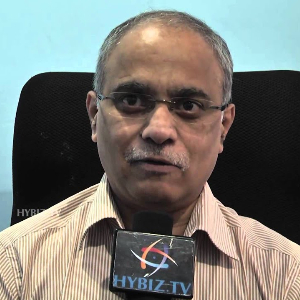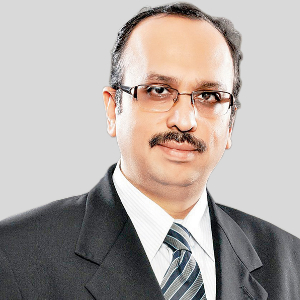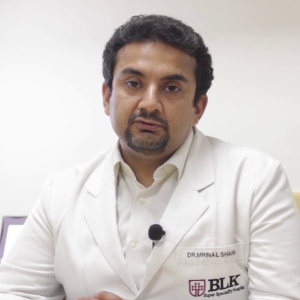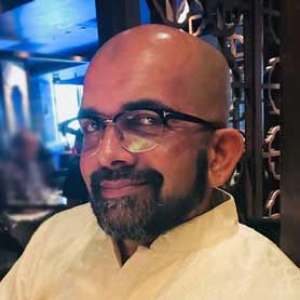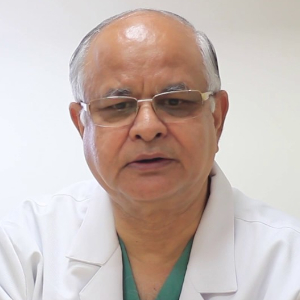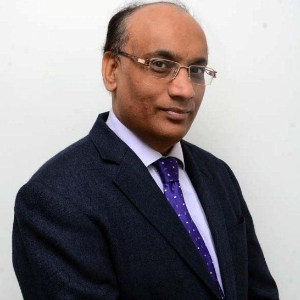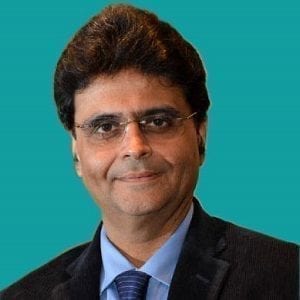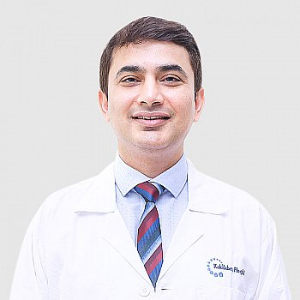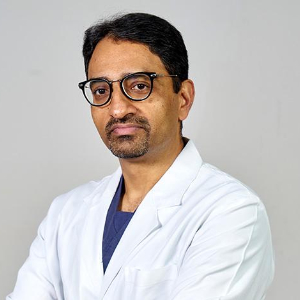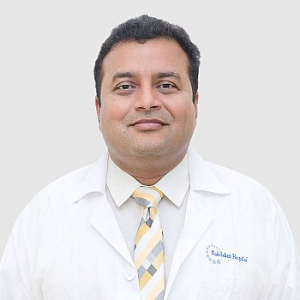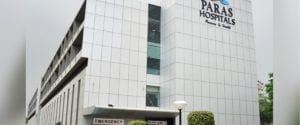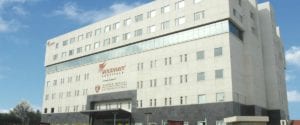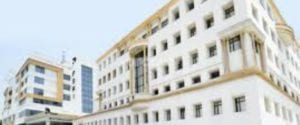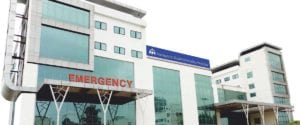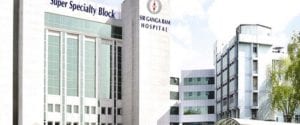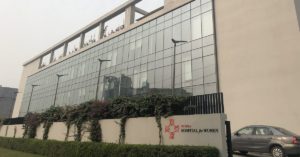Best Limb Lengthening Surgery Doctors in India
- Orthopedic Surgeon, Hyderabad, India
- Over 30 years’ experience
Profile Highlights:
- Dr. J V S Vidya Sagar is a renowned Orthopedic Surgeon and one of the most experienced surgeons for Arthroscopy in India.
- Dr. Vidya Sagar has been performing Arthroscopic and Joint Replacement surgeries for over 30 years during which he has performed 31,500 Arthroscopies, 13,400 joint replacement surgeries, 27, 600 knee joint surgeries, and 20,800 surgeries for ligament reconstruction, and over 38,600 surgeries for cerebral palsy and polio.
- Orthopedic Surgeon, Mumbai, India
- Over 25 years’ experience
Profile Highlights:
- Dr. Kaushal Malhan is a renowned Orthopedic Surgeon in Mumbai with expertise in hip and knee replacement surgery and regional resurfacing.
- Dr. Kaushal Malhan’s name has been recorded in the Limca Book of Records for his innovative Tissue Preserving Total Knee Replacement Technique that helps in reducing post-operative recovery time.
- Dr. Malhan pioneered computer-assisted joint replacement surgery in India and is the first orthopedic surgeon to perform gender-specific computer-assisted and minimally invasive knee replacement.
- Orthopedic Surgeon, New Delhi, India
- Over 20 years’ experience
Profile Highlights:
- Dr. Mrinal Sharma is a highly renowned Orthopedic Surgeon and Joint Replacement Specialist with a specialization in Arthroplasty.
- Dr. Mrinal Sharma holds with him an experience of more than a decade and has achieved huge success with joint replacement procedures, especially of the knee, during his career.
- He is among the new generation of Orthopedic surgeons who use Computer Navigated techniques for performing knee and hip replacement surgeries.
- Orthopedic Surgeon, Mumbai, India
- Over 20 years’ experience
Profile Highlights:
- Dr. Murali Poduval is a well-known Orthopedic surgeon in Mumbai with a specialization in Joint Replacement surgeries.
- He holds an extensive experience of close to 2 decades in Orthopedics and Joint replacement surgery and is an expert in the management and treatment of deformity correction, arthroplasty, and complex trauma.
- He is highly skilled in performing all types of primary and revision surgeries on the hip, knee, and spine. His primary interest also includes hip arthroplasty for severe defects in children and adolescents.
- Orthopedic Surgeon & Spine Surgeon, New Delhi, India
- Over 40 years’ experience
Profile Highlights:
- Dr. Pradeep Sharma is the Director of the BLK-Max Centre for Orthopedics, Joint Reconstruction, and Spine Surgery in Delhi.
- Dr. Pradeep Sharma has an experience of 40+ years in the field and is an expert in the treatment of both adult and pediatric patients.
- Dr. Pradeep Sharma runs arthroplasty Fellowships supported by Zimmer and Stryker and has trained and mentored young surgeons in Arthroplasty.
- Orthopedic Surgeon, Kolkata, India
- Over 30 years’ experience
Profile Highlights:
- Dr. Rakesh Rajput is the Director and HOD – Orthopedics at The Calcutta Medical Research Institute (CMRI), Kolkata.
- Dr. Rakesh Rajput’s expertise lies in Joint replacement surgeries for the knee and hip, Arthroscopy, and Pelvic and Ace tabular trauma. He is also highly skilled in Minimally invasive orthopedic surgeries.
- Dr. Rakesh Rajput received his training in Joint replacement procedure from the prestigious University of Dundee and has worked and trained under some of the best orthopedic surgeons in the world.
- Orthopedic Surgeon & Spine Surgeon, Mumbai, India
- Over 25 years’ experience
Profile Highlights:
- Dr. Ram Chaddha is a specialist Spine Surgeon in Mumbai with expertise in the management and treatment of all kinds of spinal disorders for over 25 years.
- Dr. Chaddha is trained in Minimally Invasive Spine Surgery and is also among the few surgeons in India to hold expertise in Minimally Invasive Cosmetic Spine Surgery.
- Dr. Ram Chaddha spent a considerable number of years training undergraduate and postgraduate students and has also been an examiner for such courses at Mumbai University.
- Orthopedic Surgeon, Mumbai, India
- Over 24 years’ experience
Profile Highlights:
- Dr. Shreyash Gajjar is one of the most accomplished Arthroscopic and Sports Orthopedic surgeons in India and has performed more than 3000 surgeries of which more than 2500 included arthroscopic surgeries.
- Dr. Shreyash Gajjar is the first orthopedic surgeon in India to perform several first surgeries with the use of arthroscopic procedures.
- Dr. Shreyash Gajjar received his training in Arthroscopy, Trauma, and Sports Medicine from the best orthopedic institutions and under the guidance of renowned surgeons in India, UK, and Australia.
- Orthopedic Surgeon, Gurugram, India
- Over 20 years’ experience
Profile Highlights:
- Dr. Subhash Jangid is a renowned Orthopedic Surgeon in India who performs more than 600 joint replacement surgeries annually and helps in the management of patients after such procedures.
- He played a pioneering role in establishing the first Bone Bank in India at the All India Institute of Medical Science in 2002.
- He has been associated with several other prestigious hospitals both in India and abroad and has also been a Visiting faculty at Nnamdi Azikiwe University Teaching Hospital in Nigeria where he trains young surgeons in Arthroplasty.
- Orthopedic Surgeon and Spine Surgeon, Mumbai, India
- Over 20 years’ experience
Profile Highlights:
- Dr. Vishal Peshattiwar is a leading Spine Surgeon in Mumbai specializing in Minimally Invasive Spine Surgeries (MISS)
- He has an experience of more than 2 decades in spine surgery and holds the credit of performing over 4000 spinal surgeries to
- He is the first in India to use the MISS technique on a patient with liver failure and Tuberculosis.
- Dr. Vishal Peshattiwar’s most notable case till date was performing a Revision Spine Surgery through MISS on the oldest patient in India.
Best Limb Lengthening Surgery Hospitals in India
Paras Hospital, Gurugram
- City: Gurugram, India
Hospital Highlights:
- Paras hospital was established in 2006 and is the 250 bedded flagship hospital of Paras Healthcare.
- The is supported by a team of doctors of international and national repute.
- The hospital is NABH accredited and also the first hospital in the region to have a NABL accredited laboratory.
- The hospital provides specialty medical services in around 55 departments including Neurosciences, Joint Replacement, Mother & Child Care, Minimal Invasive Surgery, Gynecology and Obstetrics, Ophthalmology, Dermatology, Endocrinology, Rheumatology, Cosmetic and Plastic surgery.
- The hospital is equipped with state-of-the-art technologies.
S L Raheja Hospital, Mahim, Mumbai
- City: Mumbai, India
Hospital Highlights:
- SL Raheja hospital is a 140-bed multi-specialty tertiary care hospital that is being managed by Fortis Healthcare Ltd.
- The hospital is a benchmark in healthcare and medical facilities in the neighborhood of Mahim & the western suburbs.
- L.Raheja Hospital, Mahim has one of the most effective ICU and Casualty care services.
- The hospital provides specialty medical services in Cardiology, Oncology, Neurology, Orthopedics, Mother & Child Care, and in Diabetes.
Wockhardt Hospitals, Mumbai
- City: Mumbai, India
Hospital Highlights:
- Wockhardt Hospitals were established in the year 1973, originally called First Hospitals and Heart Institute.
- Wockhardt Hospitals are super specialty health care networks in India, nurtured by Wockhardt Ltd, India’s 5th largest Pharmaceutical and Healthcare company.
- Wockhardt Hospitals is associated with Partners Harvard Medical International, an international arm of Harvard Medical School, USA.
- Wockhardt Heart Hospital performed India’s first endoscopic heart surgery.
- The hospital has a state-of-the-art infrastructure equipped with the latest technologies and modern equipment.
- It has special Centers of Excellence dedicated to the major specialties to provide hassle-free and high-quality clinical care.
Pushpawati Singhania Hospital & Research Institute, New Delhi
- City: New Delhi, India
Hospital Highlights:
- Established in 1996, Pushpawati Singhania Research Institute is one of the top hospitals in the NCR region, as well as one of the top facilities in India for gastroenterology. The hospital is one of South Asia’s first institutes in medical and surgical treatment for diseases related to digestion.
- The hospital is equipped with state-of-the art facilities coupled with the latest equipment as well as renowned consultants from various parts of India as well as other parts of the world.
Indian Spinal Injuries Center, New Delhi, India
- City: New Delhi, India
Hospital Highlights:
- The Indian Spinal Injuries Center (ISIC), provides state-of-the-art facilities for the management of all types of spinal ailments.
- Staffed with internationally trained, acclaimed, and dedicated spine surgeons, the hospital provides cutting-edge medical & surgical technology. The hospital provides comprehensive management of spinal injury, back pain, spinal deformities, tumors, osteoporosis, etc.
- The hospital performs motion-preserving spine surgeries including disc replacement and dynamic fixation, and minimally invasive spine surgeries such as endoscopic disc excision.
- The orthopedic service of the hospital covers all orthopedic ailments including trauma, joint diseases & replacements, oncology, pediatric orthopedics & upper limb ailment.
W Pratiksha Hospital, Gurgaon
- City: Gurugram, India
Hospital Highlights:
- W Pratiksha Hospital, Gurugram, is one of the best hospitals in the NCR region. It is also a top hospital in India for IVF. Since its inception, the hospital has performed over 5500 successful IVFs. The hospital also specializes in gynecology.
- With over 20 years of experience in providing quality healthcare, the hospital is known as one of the most trusted and valued health providers in India.
- Equipped with world-class medical facilities and advanced technology, the hospital’s doctors and clinicians also have a track record of delivering excellent results. The hospital is also known for focusing on preventive well-being as much as on curative treatment.
- The hospital has earned the trust of its patients, by providing the best available treatments at affordable costs.
Narayana Superspeciality Hospital, Gurugram
- City: Gurugram, India
Hospital Highlights:
- Situated near DLF Cyber City, Gurugram, Narayana Superspecialty Hospital is one of the top medical facilities in the Delhi NCR region, catering to the needs of the people. Known for its commitment to quality medical care and patient service, the hospital is a state-of-the-art facility with planned and well-equipped sections, which includes a spacious OPD area as well as comfortable patient rooms.
- It is the closest super-specialty hospital from Indira Gandhi International Airport towards Gurugram, and also the nearest super specialty hospital from DLF Cyber City. It is also close to major residential areas in Gurugram.
- It is part of the renowned Narayana Health Group. Established in 2000, by Dr. Devi Shetty, a renowned cardiac surgeon, it has grown to be one fo India’s leading healthcare groups.
Sir Ganga Ram Hospital, New Delhi
- City: New Delhi, India
Hospital Highlights:
- Sir Ganga Ram Hospital, New Delhi is known to provide the latest medical procedures with the latest technology in all of its units.
- The hospital has a team of reputed doctors, nurses, and healthcare professionals that ensure that patients receive quality care at affordable costs.
- Staffed with a team of highly qualified doctors, dedicated nurses, and paramedical and non-medical staff, the hospital aims to lead in healthcare delivery, medical education, training, and research.
- As per the vision of the founder, the hospital also provides free treatment to the economically weaker sections of society.
- Sir Ganga Ram Hospital also provides training to young doctors under the Diplomate in National Board(DNB) program. The DNB program at the hospital was started in 1984 and it is known for currently running the maximum number of DNB specialties in the country. It also has the distinction of having the first bone bank in India.
CK Birla Hospital, Gurugram
- City: Gurugram, India
Hospital Highlights:
- The CK Birla Hospital in Gurugram is a NABH-accredited multi-specialty hospital.
- The hospital strives to increase the quality of healthcare by focusing on UK NHS nurse and midwife training requirements. Policies and practices derived from the National Institute for Health and Treatment Excellence (NICE) recommendations in the United Kingdom ensuring that a strong focus on safety, high-quality clinical care, and sanitation is maintained.
- The hospital’s cutting-edge technology and facilities allow for real-time communication and seamless collaboration among caregivers, ensuring accuracy and the best possible results. Those with foreign experience and accreditations make up part of the hospital’s team of clinicians.
KIMS Hospital, Hyderabad
- City: Hyderabad, India
Hospital Highlights:
- KIMS Hospital (a brand name of Krishna Institute of Medical Sciences) is one of the largest and best multi-speciality hospitals in Hyderabad. The hospital provides various treatments to an enormous number of patients.
- The hospital has a capacity of more than 3000 beds. KIMS Hospitals offers different healthcare services in more than 25 specialities and super specialities.
- The hospital is equipped with modern medical equipment and technology. It has robotic equipment to provide minimal invasive techniques for patients.
- The hospital is aimed at providing world-class healthcare facilities and services at an affordable cost for patients.
- The various specialities and departments of the hospital include neurosciences, gastroenterology & hepatology, robotic science, reproductive sciences, dental science, oncological sciences, organ transplantation, heart and lung transplantation and mother and child care.
Limb Lengthening Surgery
Limb Lengthening is a surgical procedure where the bone in the leg is separated and distracted or pulled apart so that new bone can form in the gap, resulting in an increase of the length. This procedure is mainly recommended for patients suffering from leg deformities or stunted growth.
The bone, if broken or fractured regenerates itself over time, and the same tactical method is used along with external and internal medical assistance to conduct the limb lengthening surgery.
Technique used in Leg Lengthening
The principle for leg lengthening surgery is based on distraction osteogenesis where distraction stands for pulling apart and osteogenesis stands for formation of new bone.
The device used for the lengthening process is usually called a fixator and primarily, there are two types, namely, the Internal and the External Fixator. The Internal Fixators are implanted in the bone, inside the body attached to the marrow cavity of the bone like a brace while the external fixators are attached to the bone outside the body with the help of wires and pins.
Indications for Limb Lengthening Surgery
Limb Lengthening surgery is usually recommended in case of certain leg deformities but other primary causes for it can be-
- Trauma to the skeletal structure of the limb that results in shortening or deformity of the leg
- Congenital Limb length disorder
- Chronic infection of the bone or joints in the limb
- Pediatric hip disorders
- Soft tissue scarring
- Cosmetic enhancements
Symptoms for leg discrepancy varies from patient to patient. While in some patient the difference in the leg length can be visibly noticed, others might walk with a limp. In other patients, limb length issues may start with lower back pains or right after a serious leg trauma or injury.
Diagnostic Tests needed
Limb length differences at birth or visible length differences can be diagnosed at sight. However, before recommending the surgery, your doctor might ask you to attend some physical examinations to determine the root cause of the problem. Apart from X-Rays and Sonograms, or use a physical diagnostic method known as the Gait Analysis to determine the exact reason for this deformity. For detailed imaging diagnosis, doctors may even prescribe a CT Scan of the limbs.
Limb Lengthening Surgery
The surgical procedure is usually based on factors like the cause or size of the discrepancy or the patient’s age, reaction to medical procedures before or if the surgery is actually required or not. Because there are complications involved in the limb lengthening surgery, the medical team first determines if the condition can be treated in a non-surgical method. If the leg discrepancy is minute or negligible, the doctors might put the patient on observation to diagnose whether the condition is growing or not. Non-surgical methods also include wearing specialized shoes that provide an external lift to help ease activities like walking.
However, if the discrepancies are too prominent, the surgical procedure is suggested to stop or halt the limn differences.
Preparation for surgery
There are no exclusive preparation methods for this surgical procedure. However, patients are requested to help their medical team with a detailed breakdown of their past medical history including past or ongoing medications which includes herbal supplements, vitamins, homeopathy medicines, OTC or NSAIDs. Patients are also requested to ask their healthcare provider for any additional dietary regulations that they should follow before the surgery.
Explanation Video
Procedure
The surgery is performed under regional or general anaesthesia to avoid pain or discomfort during the surgery.
The lengthening procedure begins with the osteotomy process where the surgeon makes a small incision to reveal the bone to be lengthened. The bone is then cut and stabilized with internal and/or external fixators.
The patient will be requested to stay back in the hospital for 2-3 days and the rehabilitation will start after the day of the surgery where the medical team will help the patient with activities like getting out of bed, moving the joints, walking through crutches, etc. The lengthening process, however, starts a few weeks after the surgery has been performed.
Post-Operation Recovery
The surgical procedure is quick but the main lengthening process is based on the recovery from the surgical procedure which is usually done over two elaborate phases.
Distraction Phase
The actual limb lengthening procedure is done in the Distraction Phase where the internal or external fixators gradually lengthens the bone, 1 millimetre each day. The patients are usually at their best phase at this time since the bone are still distracted. Over the course of recovery, the muscles around the distraction point strengthen and movement or flexibility starts becoming harder and harder. The gap between the two distracted bone starts regenerating with new bone tissues.
The patients are requested to strictly follow therapy every single day since this is crucial for the lengthening process. Physiotherapists and the patient’s caregivers are both requested to conduct weekly and weekend physical therapy. The lengthening process works on how effective the therapy is. More the therapy the better the lengthening.
Consolidation Phase
On reaching the desired length, the patients reach the consolidation phase where the fixators are no longer adjusted for lengthening. The fixators however still remain in the leg as the newly formed bone now hardens throughout the course. Most patients are requested to stay back in the hospital during the distraction phase but they can be discharged during the consolidation phase based on their recovery progress. The bone healing process, however, is closely monitored by the medical team through image diagnostic tests such as X-rays or CT Scans.
At Home Care & Precaution
Caregivers are asked to constantly help the patient throughout the recovery process. From helping them with their daily activities to helping them through therapy, both physiotherapists and at-home caregivers have to spend a substantial amount of time helping the patient undergo the lengthening, hardening of the newly formed bone, and the recovery process in total.
Patients are requested to consult the doctor regarding showers, daily activities, re-joining work or for special diets to increase the recovery rate.
FAQs
How long do I have to stay in the hospital after the limb lengthening process?
The hospital stay after the surgery can be for 2-3 days but most patients opt to stay back in the hospital when they are going through their distraction phase. Patients can go home once they enter the consolidation phase.
What is the recovery time for leg lengthening surgery?
The lengthening process varies from patient to patient based on their reaction to therapy, immune system, and more. Generally, the recovery time period can be between 12-14 weeks from the day of surgery.
Are there any risks associated with the leg lengthening surgery?
Even though rare, risks such as infection during the new bone formation process has been documented.
When can I remove the fixators from my leg?
Every patient’s recovery phase will differ from one another. Usually, the pins or the fixators are removed when the patient is nearing the end of his/her consolidation phase.
What is the success rate for leg lengthening procedure?
Limb lengthening surgeries have over 90% success rate with expert surgeon.

